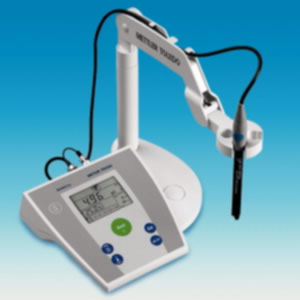 pH-meter with combined glass electrode
pH-meter with combined glass electrode |
For accurate measurements, a (combined) glass electrode is used to determine the pH. This electrode is made up of two electrodes: a standard electrode of known constant potential (Ag/AgCl-electrode) and a special glass electrode, whose potential depends on the concentration of H+ in the solution into which it is dipped. The electrode is connected to a potentiometer that measures the potential difference between the two electrodes. That potential difference is automatically converted to a pH reading.
Before using the glass electrode, the system must be callibrated by using a least one, better two buffer solutions with a well-known constant pH.
|
|